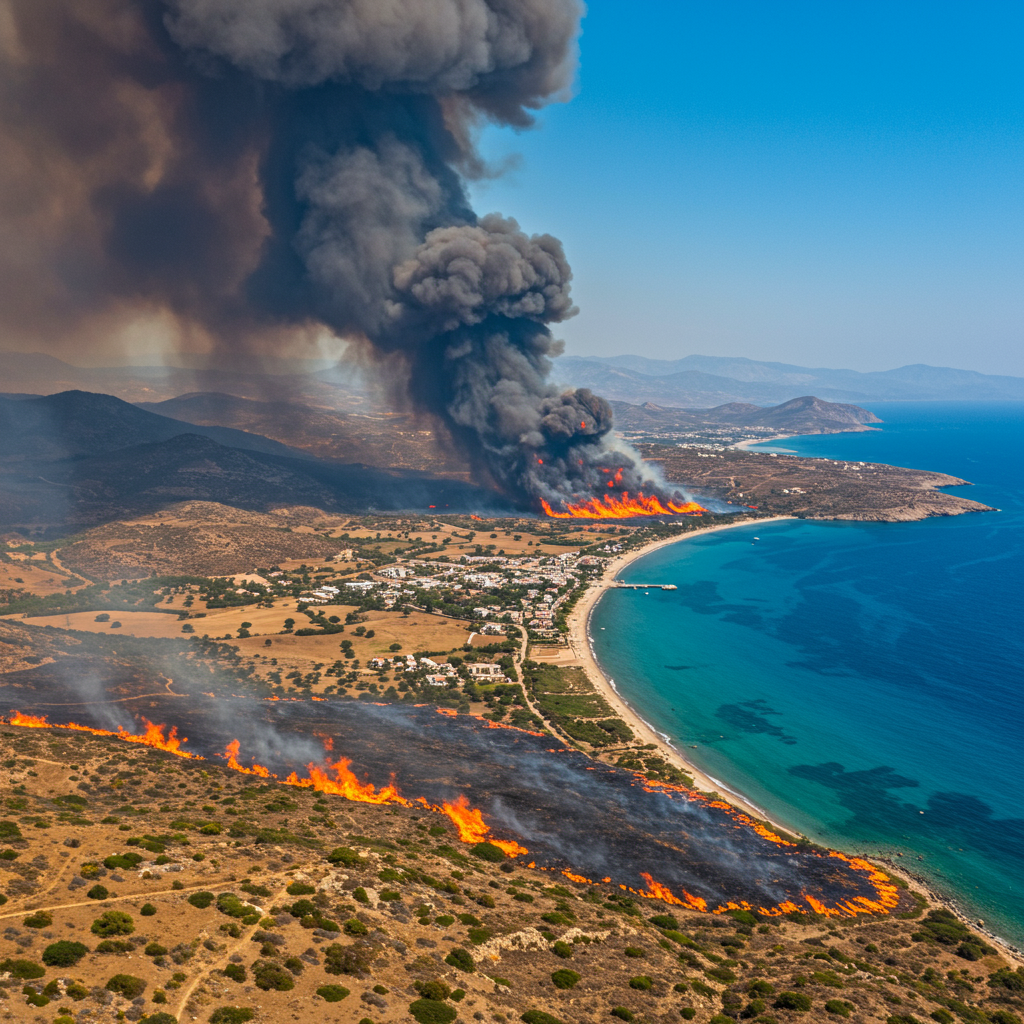Recent Israeli military strikes across the Gaza Strip have reportedly killed more than 60 people, according to local health officials. These latest fatalities add to an already devastating toll and occur as hopes for a ceasefire appear to be renewed. The strikes have intensified the severe humanitarian crisis gripping the besieged territory, where basic necessities are scarce and aid distribution faces immense challenges.
Escalating Violence Amidst Stalled Peace Efforts
Overnight Friday into Saturday morning, heavy airstrikes targeted various locations in Gaza. Health officials reported at least 62 deaths resulting from these attacks. Some of the deceased were near a displacement shelter in Gaza City, while others were killed in residential apartments. Tragically, a strike also hit a tent sheltering a displaced family in al-Mawasi, southern Gaza, killing them while they slept. Later on Saturday, another strike in eastern Gaza City killed an additional 11 people, and two more were killed near the Bureij refugee camp entrance.
The conflict traces back to the Hamas attack on Israel on October 7, 2023, which killed approximately 1,200 people and led to about 250 hostages being taken. Israel’s subsequent military campaign in Gaza has now reportedly killed over 56,000 Palestinians, according to Gaza’s health authorities. More than half of these fatalities are reported to be women and children. The ongoing war has stretched for 21 months, marked by periods of intense fighting and brief, failed ceasefires.
Dire Humanitarian Crisis Deepens
The humanitarian situation in Gaza continues its catastrophic decline. Famine-like conditions persist following a two-and-a-half month blockade on food supplies imposed by Israel. Although some limited aid has been permitted since late May, the flow is described as merely a “dribble,” far from sufficient to meet the overwhelming need.
Access to essential resources is severely compromised. UNICEF reported last week that 60% of water production facilities in Gaza are non-operational. The health crisis is equally dire, with a 50% increase in acute child malnutrition observed just between April and May alone.
Aid distribution efforts face immense obstacles. Crowds of desperate Palestinians walk for miles through dangerous areas controlled by Israeli forces just to reach distribution points. These points are often run by initiatives like the private American Gaza Humanitarian Foundation (GHF).
Reports from Gaza health officials and witnesses detail alarming incidents at these aid sites. Over 500 Palestinians have reportedly been shot and killed while attempting to access food distributed by the GHF in the past month. Witnesses accuse Israeli troops of firing directly into crowds. The Israeli military states it has only fired warning shots and is investigating reports of civilian harm near the sites. This dangerous environment has led fifteen international human rights organizations to call on the GHF to halt operations, citing concerns of complicity in potential war crimes and violations of humanitarian principles.
Fragile Hopes for a Ceasefire
Amidst the violence and humanitarian catastrophe, there are renewed whispers of a possible ceasefire. US President Donald Trump stated on Friday that an agreement could be “close” and might be reached within the next week. This follows intermittent indirect talks that have struggled to yield results since the breakdown of a previous ceasefire in March.
Reports suggest Israel’s Minister for Strategic Affairs, Ron Dermer, is scheduled to visit Washington next week. Discussions are expected to include the Gaza ceasefire, alongside other regional issues like Iran.
The path to a truce remains fraught with challenges. Hamas continues to demand a total and permanent end to the war, a condition Israel has rejected. Israel’s stated goals for continuing its military operations include the return of approximately 50 remaining hostages (with roughly 30 presumed dead) and the complete dismantling of Hamas in Gaza. Hamas has indicated willingness to release all hostages if a permanent truce is achieved.
A recent US proposal mediated by envoy Steve Witkoff suggested a 60-day pause, renewed peace talks, and a specific exchange of hostages and prisoners. Hamas reportedly proposed amendments to this plan, requesting fewer hostage releases and insisting on a permanent truce, which the US envoy publicly deemed “totally unacceptable” in late May.
Some observers suggest the recent, brief ceasefire between Israel and Iran might create a “window of opportunity” for stalled Gaza talks. Israeli Prime Minister Benjamin Netanyahu has also referenced such an opportunity for expanding peace agreements, contingent on releasing hostages and defeating Hamas.
Regional Context and Future Prospects
Beyond the immediate conflict in Gaza, regional tensions remain high. Yemen’s Iran-aligned Houthi militia claimed responsibility for launching a ballistic missile towards Israel, which the Israeli military reported intercepting. A strike in southern Lebanon reportedly killed one person, despite a supposed ceasefire between Israel and Hezbollah.
The juxtaposition of ongoing, deadly military strikes in Gaza with diplomatic efforts for a ceasefire highlights the complex and volatile nature of the conflict. The devastating impact on civilians and the worsening humanitarian crisis underscore the urgent need for a resolution that ensures protection and aid access for the Palestinian population.
The coming week, with the reported visit of Israel’s strategic affairs minister to Washington and continued mediation efforts, will be critical in determining whether the current glimmer of ceasefire hope can translate into a meaningful pause in hostilities and a path towards addressing the urgent humanitarian needs.
Frequently Asked Questions
What is the current humanitarian situation like in Gaza?
The humanitarian situation is catastrophic. Gaza faces famine-like conditions due to extended blockades on essential supplies. Aid flow is severely restricted, leading to acute shortages of food, water, and medicine. UNICEF reported that most water facilities are non-operational, and child malnutrition rates have sharply increased. Accessing limited aid is also dangerous, with reports of Palestinians being shot while trying to reach distribution points.
Where are the main aid distribution points in Gaza, and are they safe?
Some aid distribution points in Gaza are operated by initiatives like the private American Gaza Humanitarian Foundation (GHF). However, reports indicate these sites are extremely dangerous. According to Gaza health officials and witnesses, hundreds of Palestinians have been killed or wounded while attempting to get aid, with allegations of Israeli troops firing on crowds. The Israeli military states it is investigating these incidents, but human rights groups have raised serious concerns about the safety and neutrality of these operations.
What is the current status of ceasefire talks between Israel and Hamas?
Ceasefire talks are reportedly ongoing but face significant hurdles. US President Donald Trump recently expressed hope that a deal could be reached within the next week. Israel’s Minister for Strategic Affairs is expected to visit Washington soon for discussions that will include a Gaza truce. However, key disagreements persist, including Hamas’s demand for a permanent end to the war and Israel’s conditions regarding dismantling Hamas and hostage returns. Previous proposals, like a 60-day pause, have failed to gain full acceptance from both sides.




